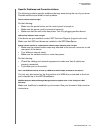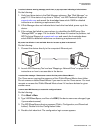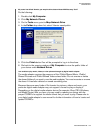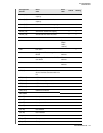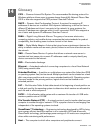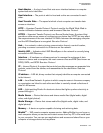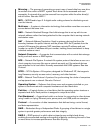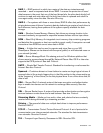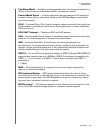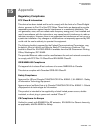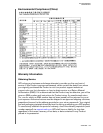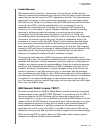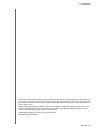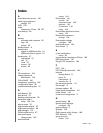
GLOSSARY - 161
WD SHARESPACE
USER MANUAL
Mirroring — The process of generating an exact copy of saved data from one drive
to another drive within a RAID 1 system. Each drive can be accessed and read
separately. A mirrored drive can be removed from a system while the other drive(s)
are still active. See also RAID 1.
MP3 — MPEG-audio layer 3. A digital audio coding scheme for distributing music
over the Internet.
Multi-user — A system in information technology that enables more than one user to
access data at the same time.
NAS — Network Attached Storage. Hard disk storage that is set up with its own
network address rather than being attached to the computer that is serving network
workstation users.
NAT — Network Address Translation. Used in gateway devices that form the
boundary between the public Internet and the private LAN. As IP packets from the
private LAN traverse the gateway, NAT translates a private IP address and port
number to a public IP address and port number, tracking those translations to keep
individual sessions intact.
Network Computer — A computer that communicates with a central data storage
facility such as a server or RAID system.
NFS — Network File System. A network file system protocol that allows a user on a
client computer to access files over a network as easily as if the network devices
were attached to its local disks. Normally associated with UNIX systems. See also
Protocol.
NTFS — NT File System. A file system, designed for Windows® NT, that supports
long filenames, security access control, recovery, and other features.
NTP — Network Time Protocol. A protocol for synchronizing the clocks of computers
and equipment over a network. See also Protocol.
Operating System — Software that allows users and programs installed on your
system to communicate with computer hardware such as a hard drive.
Partition — A logical division on a hard drive that the operating system treats as a
separate hard drive. Each partition is assigned a unique drive letter.
Port (Hardware) — A specialized outlet on a device for connecting to other devices
using a cable or a plug. Ethernet ports, power ports, and USB ports are examples.
Protocol — A convention of data transmission that defines timing, control format,
and data representation.
RAID — Redundant Array of Independent Disks. A grouping of hard drives in a single
system to provide greater performance and data integrity.
RAID 0 — RAID protocol in which data is striped across multiple hard drives,
enabling the accelerated reading and recording of data by combining the work of two
or more drives to increase performance. See also Striping.



